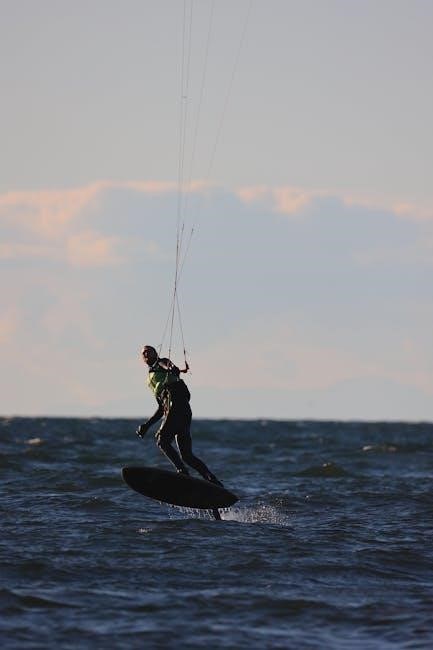The Impact Cycle: A Framework for Instructional Coaching
The Impact Cycle is a framework designed to foster powerful improvements in teaching and student learning․ It emphasizes strong partnerships‚ clear goals‚ effective strategies‚ and progress monitoring for measurable impact․
The Impact Cycle‚ championed by Jim Knight‚ provides a structured approach to instructional coaching‚ designed to facilitate ongoing improvement in teaching practices․ It’s a cyclical process emphasizing continuous learning and refinement‚ moving beyond simple observation to a collaborative partnership․
This framework aims to support educators in discovering and implementing new strategies‚ leading to measurable improvements in student outcomes; The Impact Cycle underscores the importance of setting clear goals‚ planning effective interventions‚ and diligently monitoring progress․ Unlike traditional methods‚ it prioritizes teacher agency and shared responsibility․
At its core‚ the Impact Cycle consists of three key stages: Identify‚ Learn‚ and Improve․ These stages guide coaches and teachers through a process of collaborative inquiry and action‚ fostering a culture of continuous growth and development; The cyclical nature ensures that learning is ongoing and responsive to student needs․
Key Themes of the Impact Cycle
Several key themes underpin the Impact Cycle‚ shaping its approach to instructional coaching and teacher development․ A central theme is the emphasis on strong partnerships between coaches and teachers‚ fostering trust and mutual respect․ Collaboration is paramount‚ with coaches working alongside teachers to identify areas for growth and develop tailored strategies․
Another crucial theme is the focus on clear‚ measurable goals․ The Impact Cycle encourages coaches and teachers to define specific objectives that align with student needs and school-wide priorities․ This ensures that coaching efforts are targeted and impactful‚ leading to demonstrable improvements in teaching and learning․
Continuous learning is also a key theme‚ with the Impact Cycle promoting a culture of inquiry and reflection․ Coaches and teachers are encouraged to experiment with new strategies‚ analyze data‚ and refine their practices based on evidence․ This ongoing cycle of learning ensures that instruction remains responsive and effective․

Understanding the Three Stages: Identify‚ Learn‚ Improve
The Impact Cycle revolves around three key stages: Identify‚ Learn‚ and Improve․ These stages provide a structured approach to instructional coaching‚ facilitating continuous learning and impactful changes in teaching practices․
Identify: Setting Coaching Goals
The “Identify” stage is the cornerstone of the Impact Cycle‚ focusing on establishing clear and measurable coaching goals․ This crucial phase involves collaborative discussions between the coach and teacher to pinpoint areas for improvement in instructional practices․ It’s a process of joint exploration‚ where the coach facilitates the teacher’s self-reflection on their teaching methods and student outcomes․
This stage begins with careful consideration of student data‚ classroom observations‚ and teacher insights․ By analyzing this information‚ the coach and teacher can identify specific‚ attainable‚ relevant‚ and time-bound (SMART) goals․ These goals should directly address areas where enhancements in teaching can lead to improved student learning and engagement․ The “Identify” stage sets the direction for the entire coaching cycle‚ ensuring that all subsequent actions are aligned with the agreed-upon objectives․
Learn: Planning Effective Strategies
The “Learn” stage of the Impact Cycle is where the coach and teacher collaboratively explore and select effective teaching strategies aligned with the identified goals․ This stage requires the coach to provide resources‚ research-based practices‚ and professional development opportunities․ The coach acts as a facilitator‚ guiding the teacher through various options and helping them choose strategies that best fit their teaching style‚ subject matter‚ and student needs․
This stage involves in-depth discussions about the chosen strategies‚ including their theoretical underpinnings‚ practical applications‚ and potential impact on student learning․ The coach may provide model lessons‚ videos‚ or articles to illustrate the strategies in action․ It’s a time for the teacher to ask questions‚ express concerns‚ and adapt the strategies to their specific classroom context․ The ultimate aim is to equip the teacher with the knowledge and skills needed to confidently implement the new strategies․
Improve: Monitoring Progress and Impact
The “Improve” stage of the Impact Cycle focuses on tracking the implementation of chosen strategies and analyzing their impact on student learning․ This phase involves ongoing observation‚ data collection‚ and reflective conversations between the coach and the teacher․ The coach may observe lessons‚ collect student work samples‚ and analyze assessment data to gauge the effectiveness of the new strategies․
Regular meetings are held to discuss the progress‚ challenges‚ and successes encountered during implementation․ The coach provides feedback‚ offers suggestions for adjustments‚ and celebrates achievements․ This stage emphasizes continuous improvement‚ where the teacher refines their practice based on the data and feedback received․ If the initial strategies are not yielding the desired results‚ the coach and teacher collaboratively explore alternative approaches․ The ultimate goal is to refine the teaching practice and enhance student outcomes․

The Role of Instructional Coaches in the Impact Cycle
Instructional coaches are catalysts for positive change‚ guiding teachers through the Impact Cycle․ They build partnerships‚ implement coaching cycles‚ and offer resources for continuous instructional improvement․
Building Strong Partnerships with Teachers
The Impact Cycle emphasizes the crucial role of strong partnerships between instructional coaches and teachers․ These partnerships are built on trust‚ respect‚ and a shared commitment to improving student outcomes․ Coaches work collaboratively with teachers to identify areas for growth‚ plan effective strategies‚ and monitor progress towards achieving measurable impact․ Open communication‚ active listening‚ and a supportive environment are essential for fostering these relationships․
Coaches provide teachers with the tools‚ resources‚ and encouragement they need to implement new teaching practices and refine their skills․ By working together‚ coaches and teachers can create a culture of continuous learning and improvement‚ ultimately benefiting students․ This collaborative approach ensures that teachers feel empowered and supported in their efforts to enhance their teaching and create more engaging learning experiences for all students․
Implementing the Coaching Cycle
Implementing the Impact Cycle involves a structured approach to instructional coaching․ This begins with identifying specific coaching goals in collaboration with the teacher‚ focusing on areas that will have a positive impact on student learning․ Next‚ the coach and teacher work together to learn and plan effective strategies‚ drawing upon research-based practices and resources․
The implementation phase includes putting the selected strategies into action in the classroom․ Throughout this process‚ the coach provides ongoing support‚ feedback‚ and encouragement to the teacher․ Regular monitoring of progress and impact is essential to determine the effectiveness of the implemented strategies․ Adjustments are made as needed to ensure that the coaching cycle is leading to improved teaching and student outcomes․ This iterative process fosters continuous growth and refinement․

Resources for Implementing the Impact Cycle
To support the Impact Cycle‚ various resources are available‚ including workshops‚ PDFs‚ informational videos‚ instructional playbooks‚ and checklists․ These tools aid coaches and teachers in effectively implementing the framework․

Workshops‚ PDFs‚ and Informational Videos
A wealth of resources is available to support educators in understanding and implementing the Impact Cycle․ Workshops offer hands-on learning experiences‚ exploring the framework’s stages and providing practical strategies for instructional coaches and teachers․ These workshops often delve into real-world examples and case studies‚ illustrating the Impact Cycle in action․
PDF documents provide concise summaries of the Impact Cycle‚ offering checklists‚ templates‚ and guiding questions for each stage․ These PDFs can serve as valuable references during coaching sessions and planning meetings․ Informational videos offer another avenue for learning‚ with expert insights and demonstrations of the Impact Cycle in practice․ These videos can be used for individual learning or as part of professional development sessions․ They often feature interviews with experienced coaches and teachers who have successfully implemented the framework‚ sharing their successes and challenges․ Access to these resources‚ including potential opportunities for an impact cycle PDF free download‚ can significantly ease implementation․
Instructional Playbooks and Checklists
Instructional playbooks and checklists are invaluable tools for coaches using the Impact Cycle‚ providing structured support for implementing effective teaching strategies․ A playbook typically includes one-page descriptions of various instructional techniques‚ outlining the steps involved and offering practical tips․ Checklists help coaches and teachers monitor progress and ensure that all key elements of a strategy are being implemented effectively․
These resources streamline the coaching process‚ facilitating focused conversations and action planning․ Playbooks offer guidance on selecting appropriate strategies based on identified needs‚ while checklists provide a framework for evaluating implementation fidelity․ By using playbooks and checklists‚ coaches can ensure that teachers receive targeted support and are equipped to make a positive impact on student learning․ Access to a full instructional playbook‚ with descriptions and checklists for each strategy‚ can be found in resources related to the Impact Cycle․





